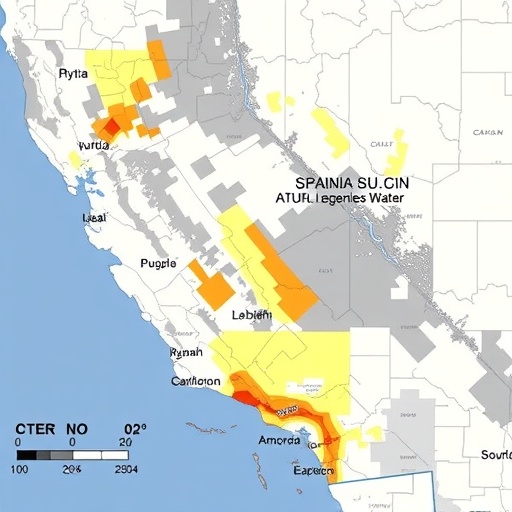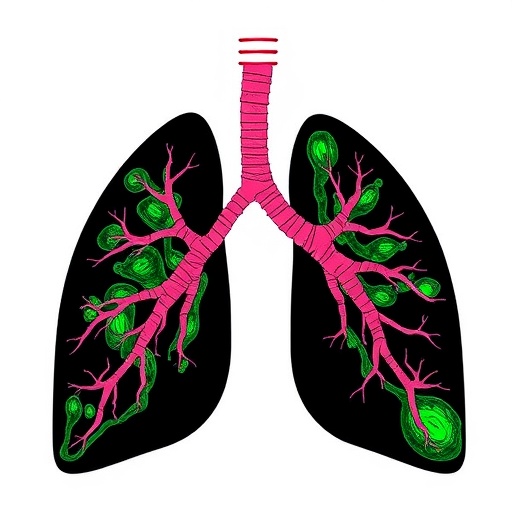
In a groundbreaking study published in the Journal of Perinatology, researchers have unveiled nuanced insights into the survival and health outcomes of neonates with Down syndrome admitted to neonatal intensive care units (NICUs) based on their gestational age. By harnessing the expansive Pediatric Health Information System (PHIS) database, the research team led by Messick et al. has painstakingly mapped how prematurity and gestational maturity intricately influence the prognosis of infants with this chromosomal disorder. This work not only deepens the clinical understanding of neonatal Down syndrome but also sets the stage for refined strategies in neonatal care tailored to distinct gestational milestones.
Down syndrome, or trisomy 21, is one of the most common chromosomal anomalies, characterized by an extra copy of chromosome 21, resulting in a syndrome marked by intellectual disability, characteristic physical features, and a litany of potential health challenges. While the general outcomes of children born with Down syndrome have been extensively documented, the stratification of neonatal outcomes based on gestational age within the critical NICU setting has remained relatively elusive until now. This study’s focus on gestational age as a determinant factor reveals complex interplays between prematurity-related vulnerabilities and the intrinsic risks posed by Down syndrome.
The research methodology employed underscores meticulous data mining of the PHIS database, which aggregates pediatric health information from multiple tertiary care centers across the United States, thus enabling a robust and representative sample size. This comprehensive approach allowed the researchers to analyze clinical outcomes of neonates with confirmed Down syndrome diagnoses, comparing those born preterm versus full-term. Such a comparative lens is crucial in illuminating differences in morbidity and mortality rates, length of hospital stay, and the necessity for interventional support such as mechanical ventilation.
.adsslot_TOm1G6hsf4{width:728px !important;height:90px !important;}
@media(max-width:1199px){ .adsslot_TOm1G6hsf4{width:468px !important;height:60px !important;}
}
@media(max-width:767px){ .adsslot_TOm1G6hsf4{width:320px !important;height:50px !important;}
}
ADVERTISEMENT
One of the pivotal revelations from the study is that preterm infants with Down syndrome admitted to NICUs face compounded risks compared to their full-term counterparts. Specifically, gestational age exerts a pronounced effect on survival probabilities, with neonates born at earlier gestational ages exhibiting substantially higher mortality rates. This finding throws into sharp relief the profound vulnerability that prematurity confers, even when juxtaposed against the baseline risks inherent to Down syndrome.
Furthermore, the study sheds light on the spectrum of morbidities experienced by these neonates, revealing that premature infants with Down syndrome endure more severe respiratory complications, including persistent pulmonary hypertension and bronchopulmonary dysplasia. The researchers hypothesize that the underdeveloped pulmonary systems typical of preterm births are exacerbated by the cardiopulmonary anomalies frequently associated with Down syndrome, thereby compounding clinical challenges in respiratory management.
Intriguingly, the data suggests that even slight variations in gestational age among newborns with Down syndrome can significantly affect the trajectory of their NICU course. For instance, infants born at late preterm stages (34 to 36 weeks) displayed improved outcomes relative to those born earlier, signaling gestational age thresholds that may inform clinical decision-making and counseling of families regarding prognosis and expected care interventions.
Length of stay in the NICU was another cornerstone metric analyzed, with findings indicating that preterm neonates with Down syndrome require extended hospitalization periods. This protracted admission time correlates not only with survival but also with the management of complex comorbidities, such as congenital heart defects—known to be highly prevalent in this population—and feeding difficulties linked to hypotonia and structural anomalies.
The researchers also underscore the indispensability of multidisciplinary care approaches, noting that the intricate needs of neonates with Down syndrome, especially in combination with prematurity, demand coordinated efforts among neonatologists, cardiologists, pulmonologists, and developmental specialists. This recognition advocates for care models that emphasize early intervention and tailored therapeutic regimens to mitigate risks and optimize outcomes.
A striking implication of this study lies in its potential to inform prenatal counseling and perinatal management strategies. Obstetricians and neonatologists can leverage gestational age-related outcome data to better forecast neonatal trajectories and counsel families accordingly, thereby enhancing shared decision-making processes. Such prognostic clarity is invaluable in a landscape where families are often navigating complex emotions and decisions about intensive care interventions.
Moreover, this research invites a reevaluation of current NICU protocols and guidelines concerning neonates with Down syndrome, particularly those born prematurely. The findings advocate for heightened vigilance and potentially earlier or more aggressive support measures in the earliest gestational cohorts, balanced against considerations of quality of life and long-term prognosis. It opens dialogue about ethical dimensions and resource allocation within neonatal intensive care.
On a broader scale, the study’s data mining approach exemplifies the power of large-scale health databases in elucidating clinical questions that single-center studies or smaller cohorts cannot adequately address. The PHIS database’s comprehensive scope permits a granular dissection of demographic, clinical, and outcome variables, fostering a data-driven paradigm shift in pediatric neonatology research. Such initiatives are imperative for continuously refining evidence-based medicine.
From a molecular and developmental biology perspective, the intersection of prematurity and Down syndrome pathology invites further inquiry into how trisomy 21 influences organogenesis during critical windows of fetal development. These gestational age-dependent outcomes may reflect differential gene expression patterns, epigenetic modifications, or altered developmental trajectories imparted by the extra chromosome, providing fertile ground for translational research.
Looking forward, the authors advocate for prospective studies that incorporate not only clinical outcomes data but also biomarker analyses and neurodevelopmental follow-up to capture the full spectrum of implications for this vulnerable cohort. Such longitudinal investigations could unravel mechanistic underpinnings and support the design of interventions that target pathophysiological processes early in life.
In conclusion, the study by Messick and colleagues represents a seminal contribution to neonatal care literature by delineating how gestational age modulates the survival and morbidity landscape of infants with Down syndrome in NICU settings. Its findings compel clinicians, researchers, and policymakers to consider gestational age not merely as a temporal marker but as a critical determinant of personalized neonatal care planning.
As awareness of this nuanced interplay grows, it could catalyze targeted clinical pathways, enhanced parental support frameworks, and optimized allocation of NICU resources. Ultimately, this research augments the arsenal of knowledge aimed at improving both immediate and long-term health outcomes for some of the most vulnerable neonates, embedding precision medicine principles into perinatal care for infants with Down syndrome.
Subject of Research: Neonatal outcomes of infants with Down syndrome stratified by gestational age in NICU settings.
Article Title: Gestational age-based outcomes of neonates with Down syndrome in the neonatal intensive care unit (NICU): review of pediatric health information system (PHIS) database.
Article References:
Messick, E.A., Hart, S.A., Strominger, J. et al. Gestational age-based outcomes of neonates with Down syndrome in the neonatal intensive care unit (NICU): review of pediatric health information system (PHIS) database. J Perinatol (2025). https://doi.org/10.1038/s41372-025-02384-0
Image Credits: AI Generated
DOI: https://doi.org/10.1038/s41372-025-02384-0
Tags: Down syndrome health challengesDown syndrome neonatal caregestational age impact on NICU outcomesgestational maturity and infant prognosishealth outcomes for neonates with Down syndromeintellectual disability and NICU experiencesneonatal intensive care unit challengesPediatric Health Information System studyprematurity and Down syndromeprematurity-related vulnerabilities in infantsstrategies for Down syndrome caretrisomy 21 NICU survival rates





